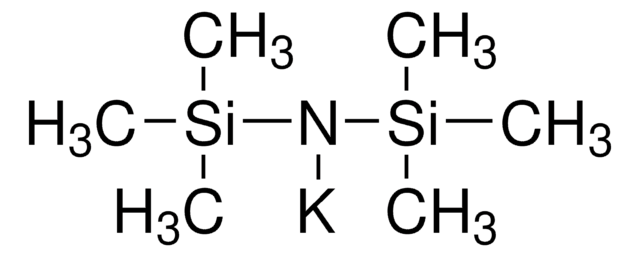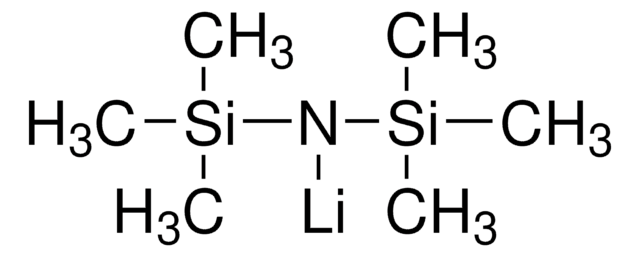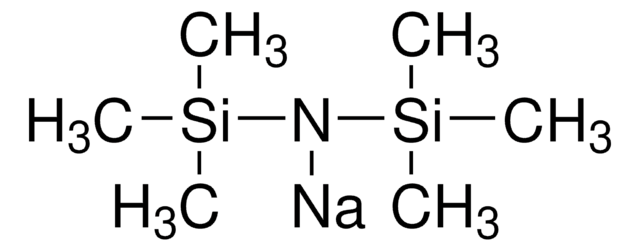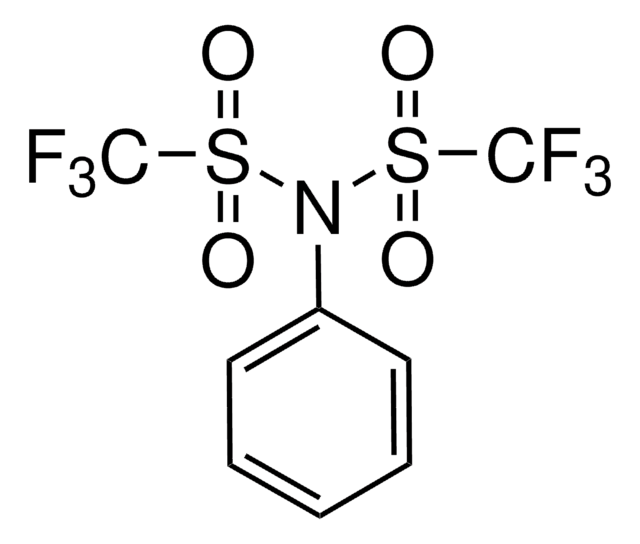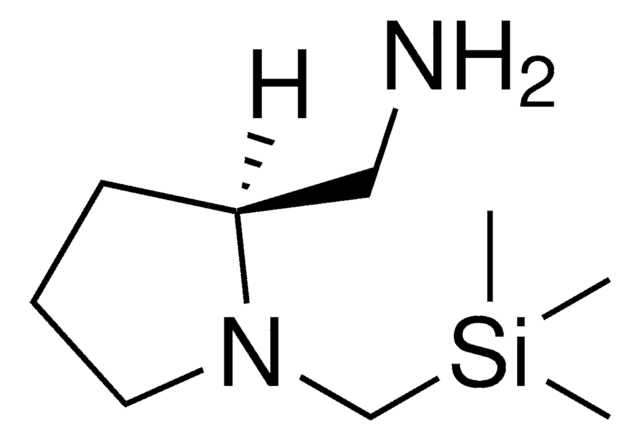766941
Potassium bis(trimethylsilyl)amide solution
1.0 M in methyl tert-butyl ether
Synonym(s):
Hexamethyldisilazane potassium salt solution, Potassium hexamethyldisilazide solution
Sign Into View Organizational & Contract Pricing
All Photos(1)
About This Item
Linear Formula:
[(CH3)3Si]2NK
CAS Number:
Molecular Weight:
199.48
Beilstein:
4006754
MDL number:
UNSPSC Code:
12352111
PubChem Substance ID:
NACRES:
NA.22
Recommended Products
vapor density
3.2 (vs air)
form
liquid
concentration
1.0 M in methyl tert-butyl ether
density
0.798 g/mL at 25 °C
SMILES string
C[Si](C)(C)N([K])[Si](C)(C)C
InChI
1S/C6H18NSi2.K/c1-8(2,3)7-9(4,5)6;/h1-6H3;/q-1;+1
InChI key
IUBQJLUDMLPAGT-UHFFFAOYSA-N
Looking for similar products? Visit Product Comparison Guide
Application
Strong base for kinetically controlled deprotonations
Signal Word
Danger
Hazard Statements
Precautionary Statements
Hazard Classifications
Eye Dam. 1 - Flam. Liq. 2 - Skin Corr. 1B
Supplementary Hazards
Storage Class Code
3 - Flammable liquids
WGK
WGK 3
Flash Point(F)
<-22.0 °F
Flash Point(C)
< -30 °C
Choose from one of the most recent versions:
Already Own This Product?
Find documentation for the products that you have recently purchased in the Document Library.
Nan Li et al.
Lab on a chip, 8(12), 2105-2112 (2008-11-22)
High-density live cell array serves as a valuable tool for the development of high-throughput immunophenotyping systems and cell-based biosensors. In this paper, we have, for the first time, demonstrated a simple fabrication process to form the hexamethyldisilazane (HMDS) and poly(ethylene
Tatsuya Nitabaru et al.
Journal of the American Chemical Society, 131(38), 13860-13869 (2009-09-10)
Full details of an anti-selective catalytic asymmetric nitroaldol reaction promoted by a heterobimetallic catalyst comprised of Nd(5)O(O(i)Pr)(13), an amide-based ligand, and NaHMDS (sodium hexamethyldisilazide) are described. A systematic synthesis and evaluation of amide-based ligands led to the identification of optimum
Juliana Tsz Yan Lee et al.
Scanning, 34(1), 12-25 (2012-04-26)
Common dehydration methods of cells on biomaterials for scanning electron microscopy (SEM) include air drying, hexamethyldisilazane (HMDS) or tetramethysilane (TMS) treatment and critical point drying (CPD). On the other side, freeze-drying has been widely employed in dehydrating biological samples and
Xiaoguang Li et al.
Chemical communications (Cambridge, England), 47(38), 10761-10763 (2011-08-30)
A silica microsphere suspension and a silica sol are employed in a two-step dipping process for the preparation of a superhydrophobic surface. It's not only a facile way to achieve the lotus effect, but can also create a multi-functional surface
Werner Mormann et al.
Macromolecular bioscience, 9(4), 369-375 (2008-11-26)
Trimethylsilylation of cellulose in different 1,3-dialkylimidazolium ionic liquids (IL) with hexamethyldisilazane (HMDS) as a silylating agent was investigated. Trimethylsilyl (TMSi) cellulose with a degree of substitution (DS) greater than 1 is insoluble in the IL. The maximum DS obtained depends
Our team of scientists has experience in all areas of research including Life Science, Material Science, Chemical Synthesis, Chromatography, Analytical and many others.
Contact Technical Service